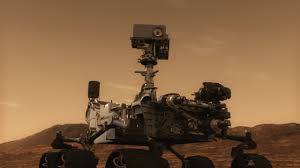A team using the Sample Analysis at Mars (SAM) instrument suite aboard NASA’s Curiosity rover has made the first detection of nitrogen on the surface of Mars from release during heating of Martian sediments.
The nitrogen was detected in the form of nitric oxide, and could be released from the breakdown of nitrates during heating. Nitrates are a class of molecules that contain nitrogen in a form that can be used by living organisms.
The discovery adds to the evidence that ancient Mars was habitable for life. Scientists believe that the detected nitrogen in the form of nitric oxide could be released from the breakdown of nitrates during heating of sediments from Mars. However, there is no evidence suggesting that the discovered nitrogen molecules found by the rover was created by life on the red planet.
It should be noted that Nitrogen is essential part for all known forms of life as it used in the building basic blocks of larger molecules like DNA and RNA that encode the genetic instructions for life. It is also essential in proteins that is used to build structures like hair and nails in living organisms.





